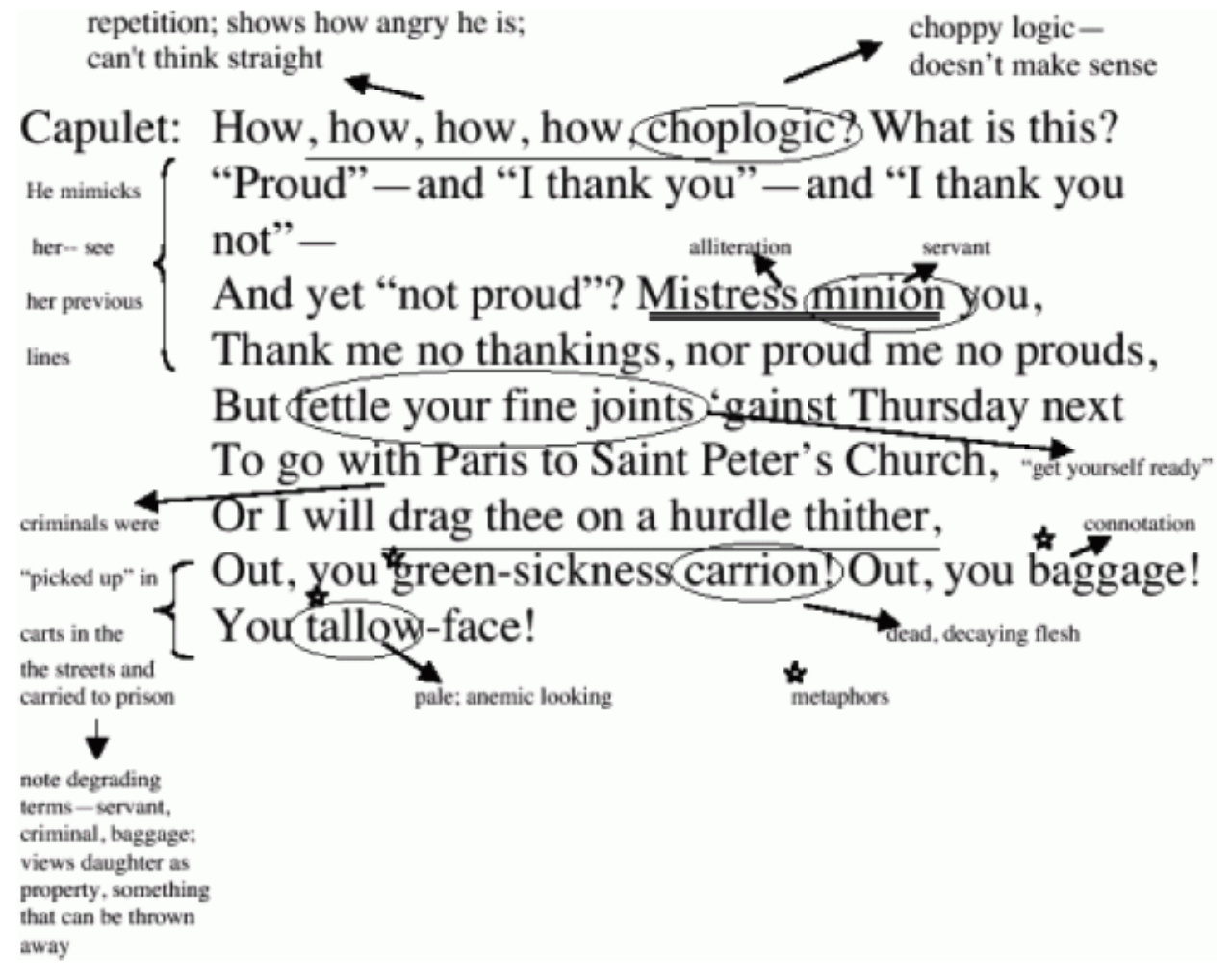Active Reading: The Art of Annotation | 主动阅读:评注的艺术
We do not read books in this class; we study literature! At an academic level, it is not enough for you to passively read the words on a page. You must think about words, question ideas, interact with the text, engage with the author, hold conversations and CREATE...
我们已经不再是学生在课堂里读书了,而是研究文学!从学术层面来说,只是被动地阅读书本上的文字是远远不够的。你必须要去思考这些文字的内容,质疑其中的想法,与文字交互,与作者互动,保持交流以及创造……
To succeed in life, you will need to be a proficient reader. One way to strengthen your reading skills is to closely read the texts we study. Reading is not a race -- slow down. The next step is to annotate the text. I expect you to annotate EVERY text that we read! But, what is annotation? Dictionary.com states that to annotate means “to supply with critical or explanatory notes; comment upon in notes.” This means that while you are reading, you will be taking notes within the text.
为了成为人生赢家,你需要变成一个阅读的行家。加强阅读技能的一种方式就是仔细阅读我们所学习的内容。阅读不是一场比赛 —— 慢下来。下一步就是给文字作评注。我期望你尽可能给阅读的每一处文字都打上评注!但是评注是什么东东?Dictionary.com 上面显示,评注指的是「作重点或者说明性注解」。这就意味着当你阅读的时候,你将会在文本里面做笔记。
No more curling up on the couch or lying in bed, passively reading; you should have a pen/pencil in hand and be free from other distractions. Unlike "highlighting” alone, which is a passive activity, the process of annotating text helps you to stay focused and involved with the text. Soon you will be concentrating as you read and retaining more information, which will help to improve your comprehension and analysis. It would be a good idea to purchase the texts each time we read a new book! If you do not purchase the books, you will need to find a different way to annotate in the school’s books, perhaps by using small post-it notes. Occasionally, I may conduct an “annotation check” which will be counted as a quiz grade.
不要再蜷缩在沙发上或躺在床上被动地去阅读,你应该手拿一只钢笔或者铅笔,而且不受其他干扰。不再只是简单地「高亮」,那只是一种被动的行为,评注内容的过程可以帮你保持专注,并让你沉浸到到文字当中去。很快你就会专心于你的阅读并吸收更多的信息,这会有助于提高你的理解和分析能力。在我们每次阅读一本新书的时候这会是一个好主意!如果你不买书的话,你就需要用另外一种方式来标注学校里面的书,也许就可以用上小的便利贴。有的时候,我可能还会进行「评注检查」来算作测验的分数。
Becoming an Active Reader Through Annotation | 通过评注成为一个主动的阅读者
Three main things to consider: decide on the author’s most important points, identify how they fit together, and show how you feel about them.
值得考虑的三大事情:确定作者最重要的见解,理解它们如何相互配合,并且描述你对其感觉如何。
- To annotate: underline, highlight, or flag passages that stand out to you in some way. Make written notes in the margins to connect ideas or make note of important passages. Also make note of specific details that support a main idea or literary theme, and identify your reactions to specific passages (if applicable).
- Although the more specific your marks, the better it will be when you write your essays, the downfall to annotating is that many people underline or highlight too much! Try to avoid this pitfall. Remember, annotate according to your purpose!
- 评注的方式:_下划线_,高亮,或者标记那些在某方面吸引你注意力的段落。在边缘处写下备注,用来关联想法,或者标记重要段落。也可以标注支持某个中心思想或者文学主题的具体细节,或者记下你对于某个段落的反应(如果可以的话)。
- 虽然你标记得越特别,在你写论文的时候就会越好,然而评注不起作用的原因却是很多人的下划线或者高亮太多了!尽量避免这个陷阱。记住,评注要取决于你的目标!
Consider the following questions as you read:
在阅读的时候思考以下问题:
Landsberger, Joe. “Reading Critically.” Study Guides and Strategies. Web. 20 Aug. 2010.
Landsberger, Joe. “Reading Critically.” Study Guides and Strategies. Web. 20 Aug. 2010.
- What initial topics or questions are raised for me, the reader?
- What issues are addressed in the reading?
- What conclusions does the author reach about the issue(s)?
- What are the author’s reasons for his or her assertions?
- Are there passages that stick out in the reading selection? Why does this passage stickout (ask this question for each passage)?
- 最初的主题是什么?我,即读者最开始所提出的问题是什么?
- 阅读材料所提及的问题是什么?
- 作者对于这个(些)问题达成了什么结论?
- 他或她的主张背后的原因是什么?
- 阅读选集的这些段落是否突出了重点?为什么这个段落有所着重(每个段落都要提出这个问题)?
Suggestions for annotating include the following:
以下是作评注的一些建议:
- Label and interpret literary devices (metaphor, simile, imagery, personification, symbol, alliteration, metonymy, synecdoche, etc.) and elements of style (tone, diction, syntax, narrative pace, use of figurative language, etc.)
- Identify themes, main ideas, supportive details and/or evidence that lead the reader to a conclusion about the text
- Summarize what you read (minimally)
- Write questions
- Converse with the author
- Make connections to other texts or experiences
- 标签和解释性文学元素(暗喻、明喻、意象、象征、符号、头韵、转喻、提喻,等等)和元素风格(语气、措辞、语法、叙事节奏、比喻性语言的使用,等等)
- 确定主题,主要观点,支持论点的细节以及/或者是引导读者得出内容结论的论据
- 总结所阅读的内容(最小化)
- 写下问题或疑虑
- 与作者谈话
- 跟其他内容或经验建立连接
Sample annotated text:
评注内容样例:
